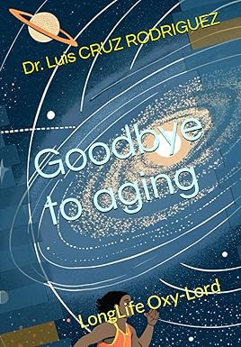Description
Oxidative stress is a global health concern, yet it remains difficult to monitor due to the lack of standardized models for tracking oxygen bioavailability in metabolic processes. LLOL addresses this gap by offering a patented method for calculating OSC from oxygen-related energy metabolism parameters. Oxidative stress occurs when there is an imbalance between free radicals and antioxidants in the body. While excess free radicals damage lipids, proteins, and DNA, a deficiency can impair immune function, reducing the ability of macrophages and natural killer cells to eliminate dysfunctional cells. Dr. Cruz Rodríguez has since developed and patented various natural anti-aging products, including creams and nutritional supplements. Most notably, he created the LongLife OxyLord (LLOL) algorithm, a tool that estimates two key physiological metrics:
- The Energy Balance Coefficient (EBC), which reflects oxygen-dependent metabolic energy.
- The Oxidative Stress Coefficient (OSC), which indicates the level of oxidative stress in the body.
Cannabis sativa is a plant with medical and psychotropic characteristics that has long been utilized for its seed oil, oleoresin, and textile fibers. The two main phytocannabinoids that have received the most attention and study are cannabidiol and delta-9-tetrahydrocannabinol, which are present in hundreds of secondary metabolites derived from Cannabis sativa L. There is evidence to suggest that these phytocannabinoids may be useful in the overall treatment of cancer. This evidence consists of their relevant signaling pathways, proof of their effectiveness in the treatment of cancer, symptoms related to the treatment of cancer, and proof that they might be used in addition to traditional cancer therapies. In this review, we’ll talk about the most current research that firmly backs the continued research and development of these two phytocannabinoids as potential anticancer agents. ELIDAN dynamic, CORP had developed manufactory systems and protocols involved in Vegetal Oil maceration using alcoholic fermentation as biological scenario where Dioxide of Carbone (CO2) and Ethanol (EtOH) are the tools in pure CBD Oil extraction and alcoholic drinks from cannabis plant.
Hyperbaric oxygen therapy has emerged as an innovative strategy within this category,
demonstrating its ability to restore biological processes involved in mitochondrial renewal and slow the
progression of MNDs. Humans act as natural hyperbaric chambers, regulating their internal pressure
through oxygen combustion, and this internal pressure must be balanced with external pressure to en
sure optimal energy flow between the individual and their environment. To maximize the effectiveness
of interventions such as hyperbaric oxygen therapy, understanding individual genetic variability is crucial. Genetic polymorphism analyses, which represent the most precise and advanced method for identifying specific genetic variations, are essential for understanding how these variations affect the individual’s response to oxidative stress and alterations in energy production. These analyses allow for the
personalization of critical oxygen doses (CDO) and the adaptation of therapy protocols to the patient’s
specific genetic needs, thereby optimizing treatment outcomes with epigenetic therapies, among which
oxygen therapy is essential. We have developed the LONGLIFE OXY-LORD algorithm, which adjusts
the pressure in the hyperbaric chamber based on factors such as body size and cranial, thoracic, and
abdominal morphology.
ALSO HARDCOVER LARGE PRINT AVAILABLE IN AMAZON !





Reviews
There are no reviews yet.